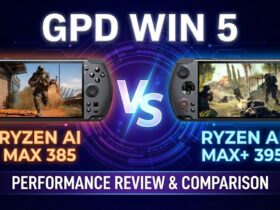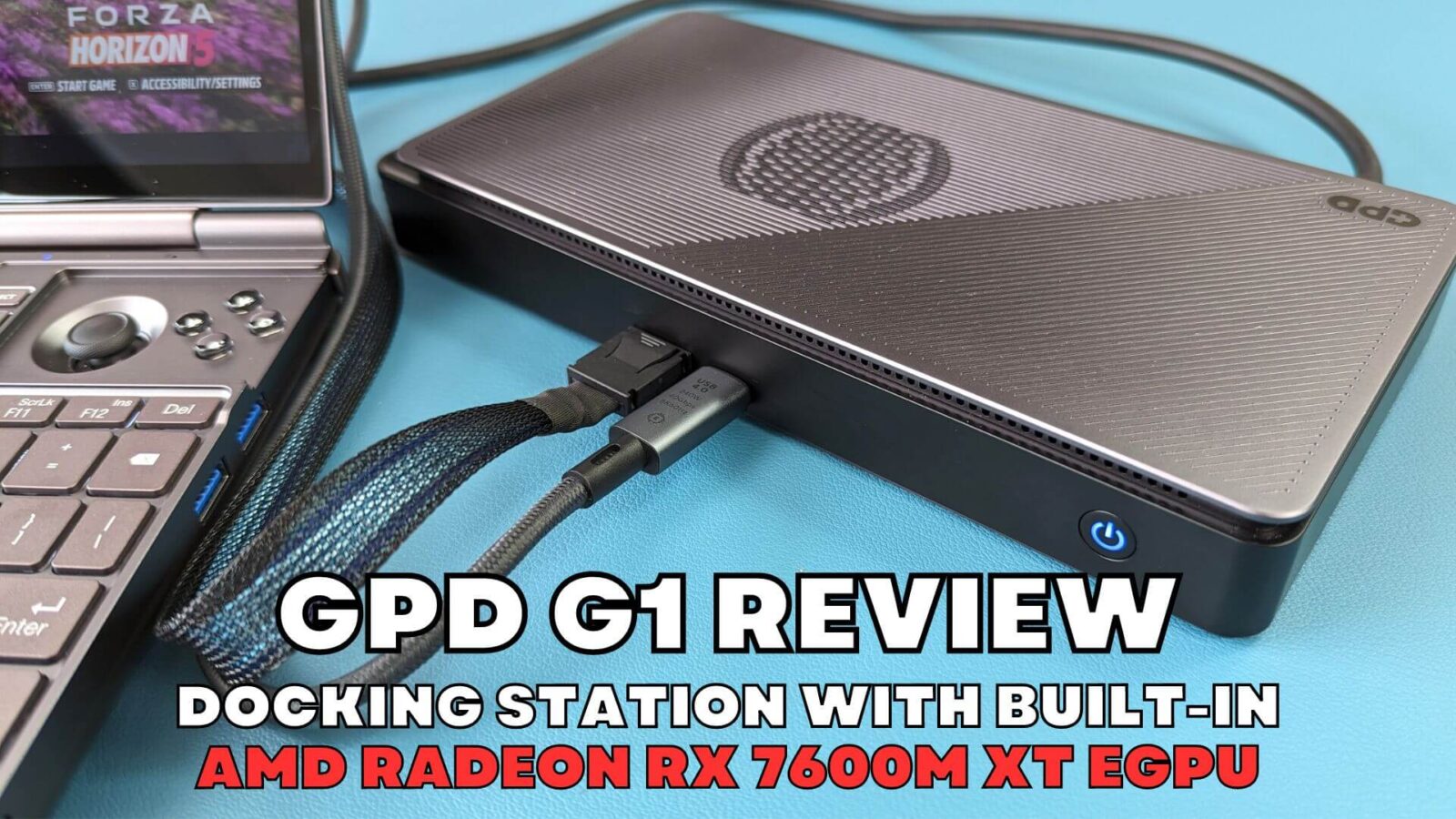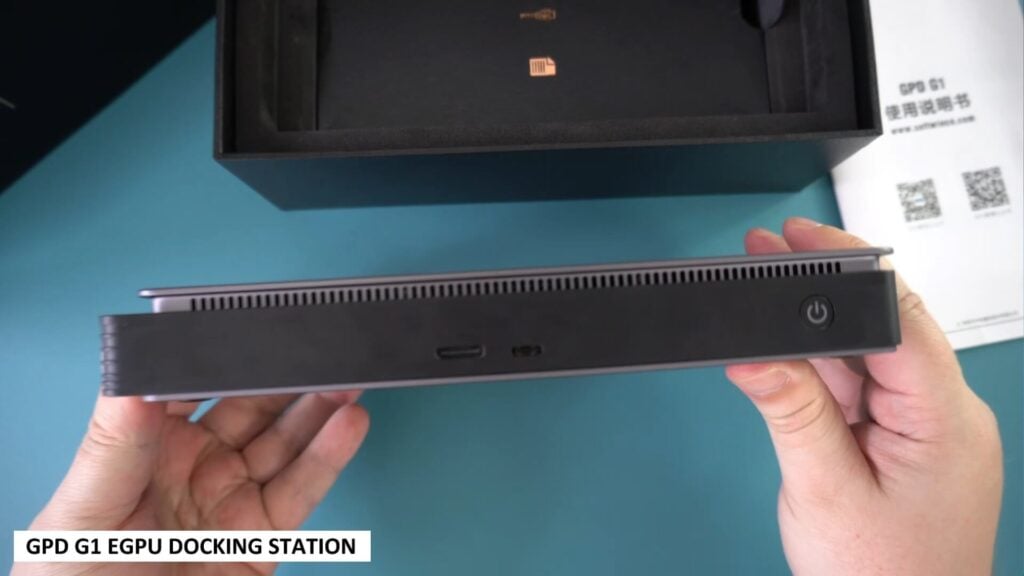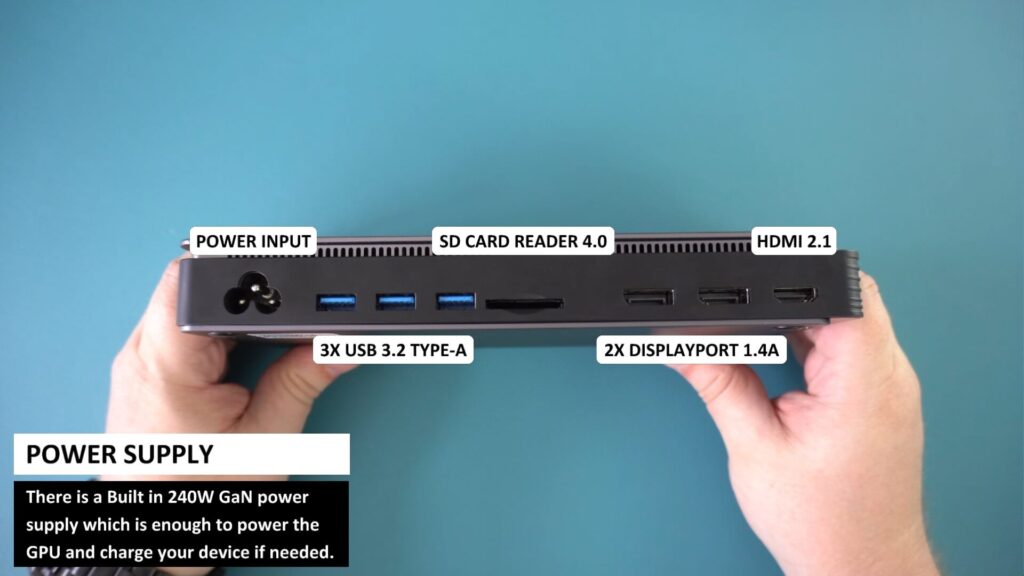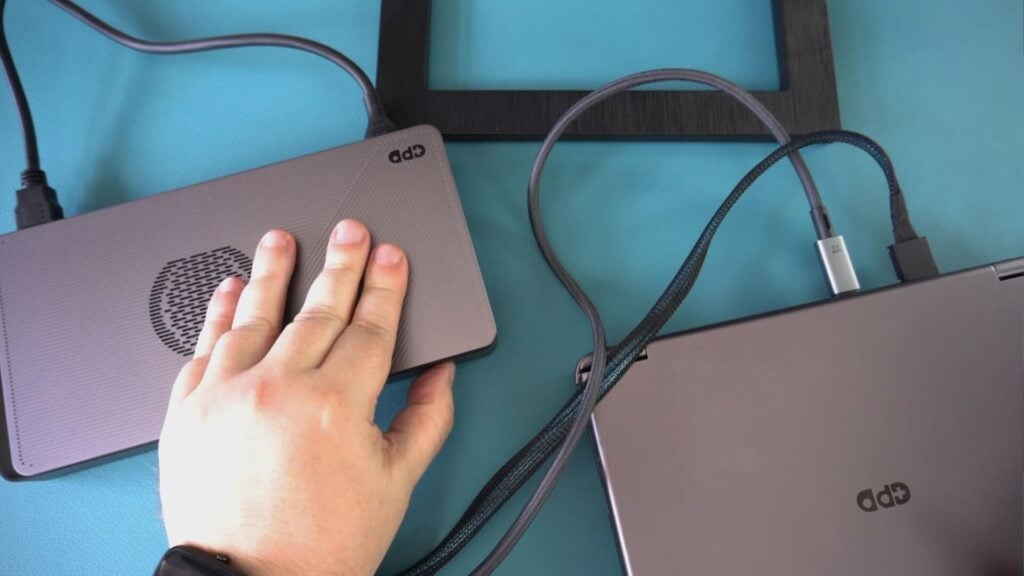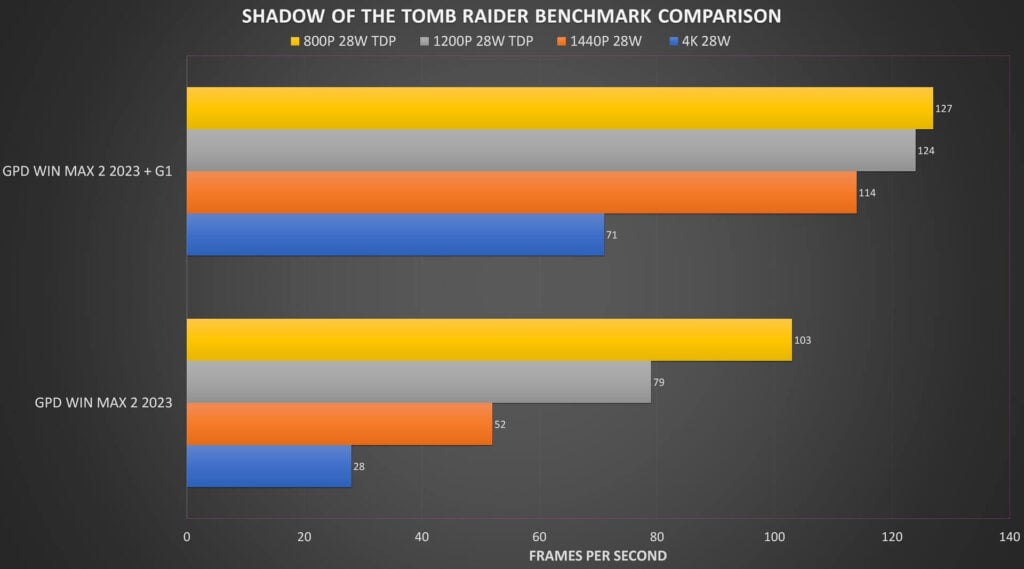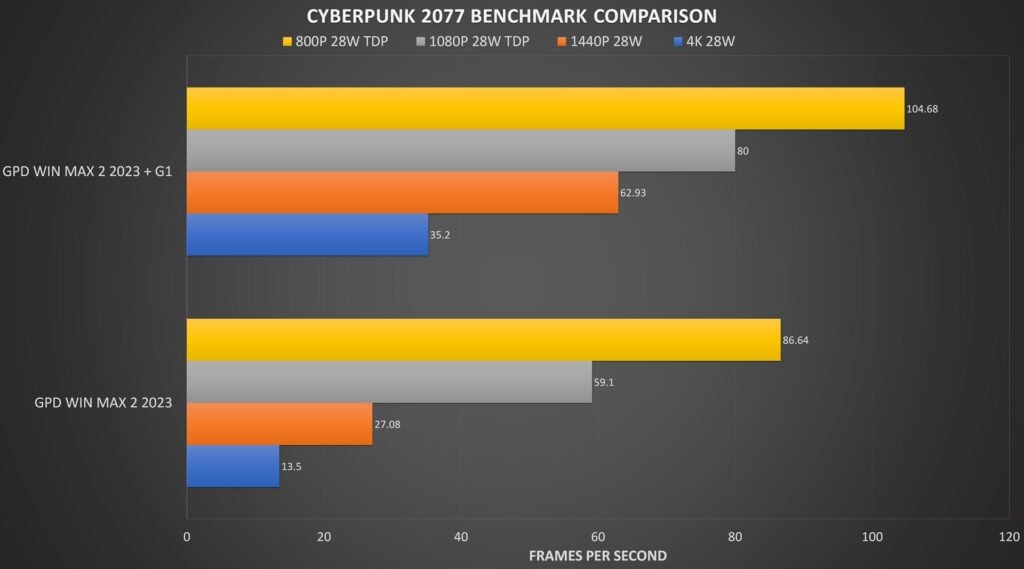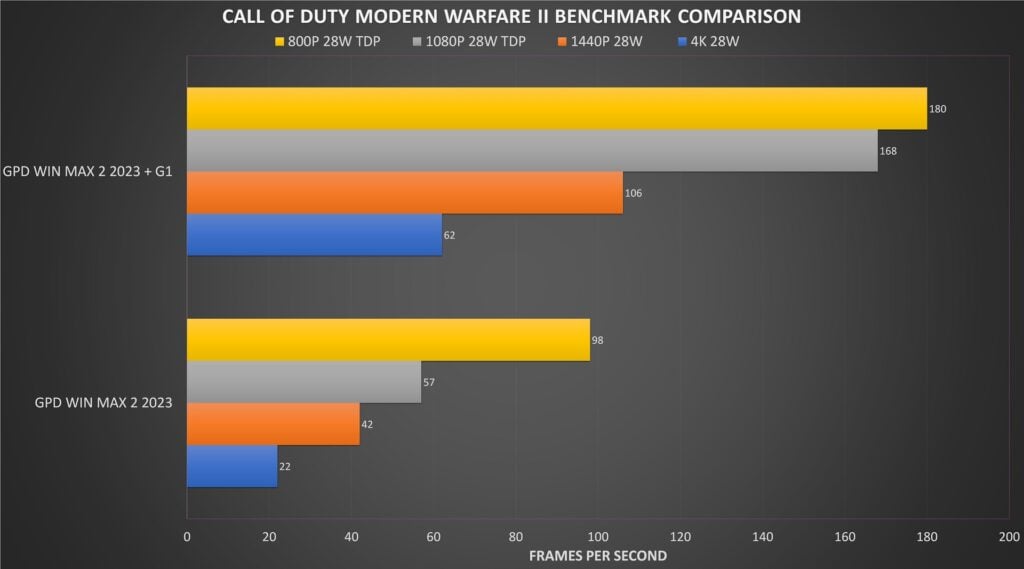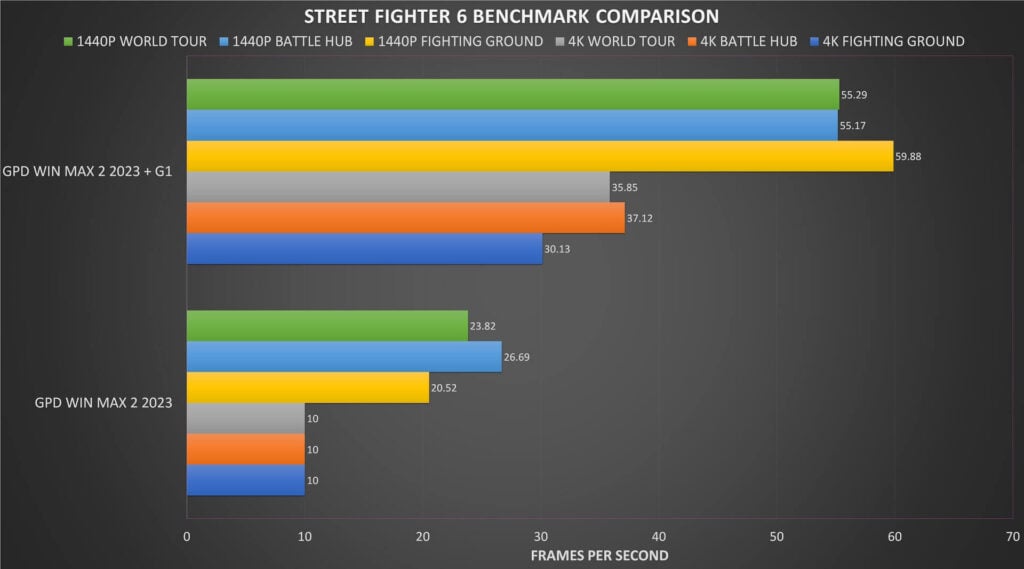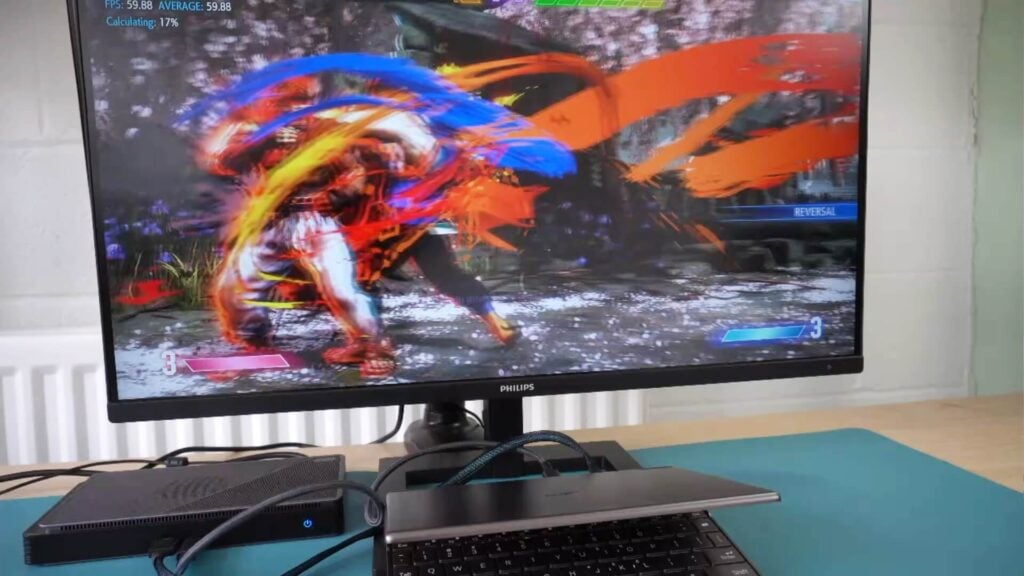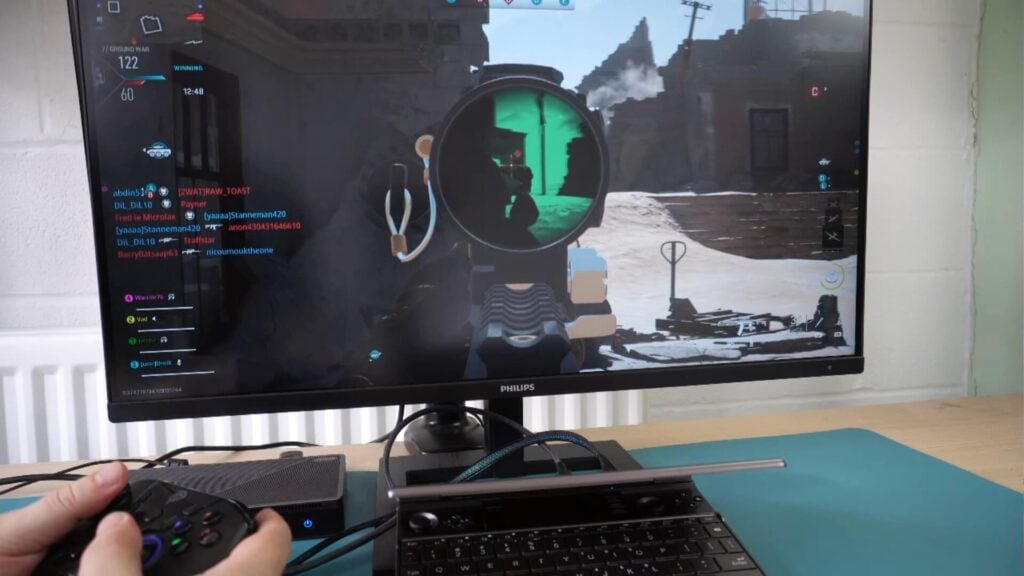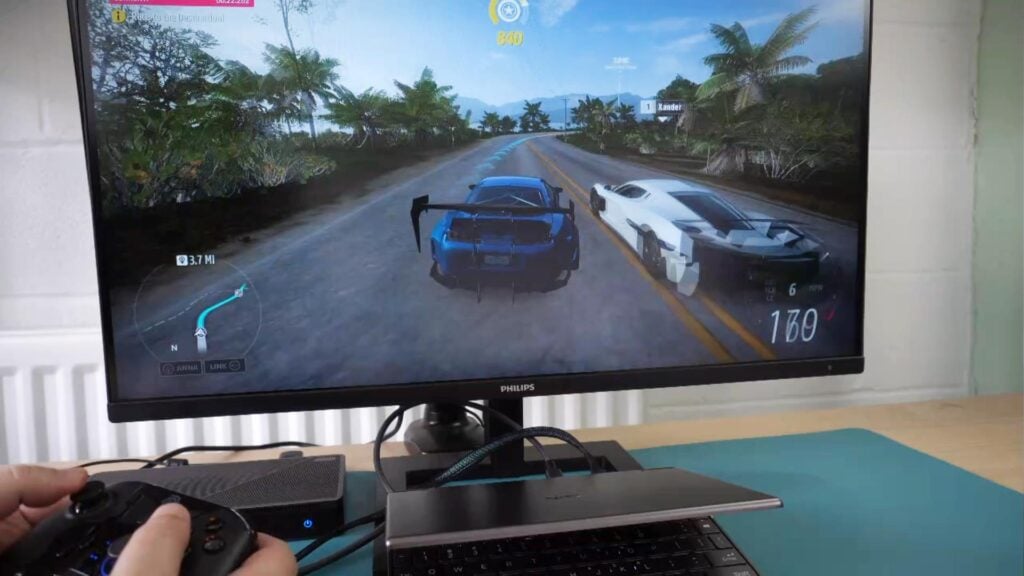G1 eGPU docking station
-
Design
(5)
-
Build Quality
(5)
-
Performance
(4.5)
-
Features
(4.5)
Summary
The GPD G1 eGPU docking station combines the versatility of a traditional docking station with a built-in AMD Radeon 7600M eGPU. With Oculink and USB 4 connectivity it is an excellent option for supercharging your handheld or mini PC.
Overall
4.8User Review
( votes)Pros
- Small light & portable
- Good performance on beta drivers, up to 30% more on official drivers
- Nothing this small on the market so far
Cons
- Not upgradeable i.e. adding a new graphics card
We have been patiently waiting since we first broke the news back in April that GPD were releasing the G1 eGPU docking station with built-in eGPU. In our GPD G1 eGPU docking station review we will check it out with the GPD WIN MAX 2 2023 with Oculink port.
GPD G1 eGPU docking station review video
Unboxing the GPD G1 eGPU docking station
As always we start our GPD G1 eGPU docking station review with a quick unboxing. First we have a user manual which is in Chinese and English. Underneath is the GPD G1 eGPU docking station itself which we will show in more detail shortly.
Inside the box is a power lead, we will include the correct adapter for your country. And a USB 4.0 cable. NOTE: It does not come with an Oculink cable, but you can get one in a bundle when ordering.
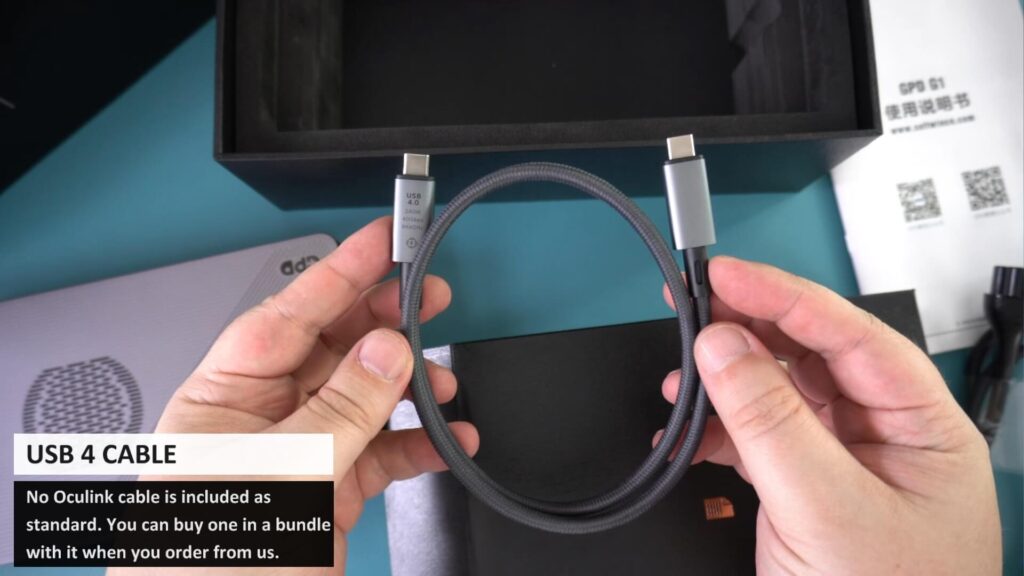
GPD G1 eGPU docking station overview
We continue our GPD G1 eGPU docking station review with an overview of the device. It measures around 8.8 x 4.3 x 1.1 inches (22.5 x 11.1 x 3.0 cm) and weighs around 920 grams. The case is made from Aluminium Alloy which will help keep it protected if carried in a bag for example.

On the front is an Oculink port, more on this later, and a USB 4 port for backwards compatibility with other devices. And on the right is the Power button.
On the back is the power input followed by three USB 3.2 type-A ports for connecting peripherals to. The is a high speed 4.0 sd card reader which is very useful. The USB ports and card reader are only available when connected to a USB 4 host device. For video output there are two DisplayPort’s and one HDMI for up to triple monitor support.
GPD G1 eGPU Technical Specifications
| GRAPHICS CHIP | AMD Radeon RX 7600M XT |
| ARCHITECTURE | RDNA 3.0 |
| BASE CLOCK | 1500 MHz |
| GAME CLOCK | 2300 MHz |
| BOOST CLOCK | 2615 MHz |
| RAM | 8GB GDDR6 2,250MHz |
| GRAPHICS PORT | Oculink(SFF-8612)Female Port × 1 USB 4 × 1 |
| VIDEO PORT | HDMI 2.1 × 1 DisplayPort 1.4a × 2 |
| DATA PORT | USB 3.2 × 3 SD 4.0 × 1 Both only work when connected to USB 4 device |
| COOLING | Active Cooling, Air Cooling |
| TGP | 120W |
| POWER SUPPLY WATTAGE | Built in 240W GaN Power Supply |
You can connect to your device for the GPU in two ways. If your device, such as the GPD WIN MAX 2 2023, has an Oculink port then this is the best connection. Or if you have a USB 3 or above compatible device you can connect via the USB 4 port.
Oculink is a link directly to and from the PCIe on the GPU to your device providing higher bandwidth and stability than USB 4. It also has granular power management capabilities specific to graphics cards which improves power usage for example. We have a detailed article about Oculink here which you can read more about it.
Over the rest of 2023 onwards we will be seeing more devices supporting Oculink such as the MAX 2 23 and forthcoming GPD WIN MINI and revised AYA NEO 2S. Essentially, this is the best way to get optimal performance from the GPD G1 eGPU docking station with your device.
The latest handhelds are supported, providing they they have OcuLink or USB 4 support. This also includes the new ROG Ally X which now has a USB 4 port.
GPD G1 Benchmarks
As part of our GPD G1 eGPU docking station review we are performing some benchmarks. For the benchmarks we are using the GPD G1 connected to the GPD WIN MAX 2 2023, via Oculink, for the GPU, and USB 4 for the other features such as the USB ports.
For transparency we do have to state that we are still using beta drivers for the WIN MAX 2 2023, these did cause a lot of issues getting the GPD G1 eGPU docking station to play nicely with it. After some time installing different drivers we got a mostly stable setup, at least enough for us to make a review.
For this GPD G1 eGPU docking station review we are connected to a 4K monitor and using that exclusively. We had issues running it with the internal screen so we will check this out in a future update once it is stable.
We are fairly sure that the issues are to do with the lack of proper AMD drivers for the GPD WIN MAX 2 2023 and by launch they should be fixed.
[UPDATE] AMD have released drivers and we are retesting the handhelds and G1. In our first tests we saw as high as 30% performance increase over the beta drivers, so keep this in mind for the below benchmarks.
All tests are performed at 28W TDP and at 800P, 1200P, 1440P and 4K resolution with no FSR etc, to get a range of data for comparison between integrated and external GPU.
Shadow of the Tomb Raider
For the games benchmarks we start with Shadow of the Tomb Raider on the Lowest graphics settings. We can see a bit of difference at 800P and especially at 1200P, an FPS increase of 23% and 56% respectively.
At 1440P we get around a 119% increase in FPS over the integrated graphics, and at 4K we get a very impressive 153% increase from 28 frames to 71.
Cyberpunk 2077
On Cyberpunk we are running on the Low graphics settings. At 800P and 1080P we get a FPS increase of around 20% up to 35%.
At 1440P we get around a 132% increase in frames per second, and at 4K we get a massive 160% increase from 13.5 to 35.2.
Call of Duty Modern Warfare 2
On Call of Duty Modern Warfare 2 we are running on the Minimal graphics settings. At 800P we get 83%, and 1080P a very impressive 194% difference in frames per second.
At 1440P we do not see a massive jump in FPS compared to 1080P with only 152%, but at 4K we do get a decent 181% increase in FPS.
Street Fighter 6
For Street Fighter 6 we are running on the Highest settings to stress both GPUs. For simplicity on the chart we have just the 1440P and 4K on screen. We got the full 60 FPS at 720P and 1080P on the G1 so it performs far faster than integrated here.
At 1440P we get scores of 23, 26 and 20 versus 55, 55 and 59 frames per second across the three tests, around 148% average. And at 4K, we were getting around 10 FPS on integrated graphics before it would keep randomly crashing. On the eGPU we got 35, 37 and 30 frames per second across the three tests. That’s a massive 240% average increase.
Benchmark Summary
At 4K resolutions we are looking at around an average 150% frames per second increase. At 1440P we get around a 108% average increase. For 1080P and below we see lower returns on performance.
This is generally what we see with higher-end graphics cards, they have a larger increase in performance over integrated as you go higher resolutions from 800P to 4K.
If you have a 1440P or higher compatible monitor then you will see a decent increase in performance with the GPD G1 eGPU docking station when it is being used. There’s still a decent increase at 1080P, but any lower, you are really not getting the full benefit of using an external GPU compared to integrated with matching graphics settings.
Final Thoughts
We conclude our GPD G1 eGPU docking station review with our final thoughts on it. Again we are in the hands of AMD and their lack of driver updates for the 7840U and 780M GPU which really hampered our benchmarks. This covered simply getting decent benchmark results with the integrated GPU, and even getting the GPD G1 eGPU docking station to work properly.
As a result, the benchmarks for both the integrated and external graphics are not final. We are planning to revisit and retest all the 7000 series handhelds once AMD releases proper drivers, whenever that will be!
In the meantime we go with what information we have. We know from the benchmark results, it is best for use at 1440P and above, though you can go lower if you wanted to. 1440P is still the sweet spot for gaming with most people, but you can also use FSR to run at 4K for example.
On to the actual G1 eGPU docking station itself. The main selling point of the G1 is that it is an all in one unit. You do not need to buy a separate eGPU, PC power supply, cabling and an enclosure case to keep it all in. Then you have the additional USB ports, high speed card reader and three video outputs. And then you have to consider the actual size, building your own setup simply does not exist at the size of the GPD G1. It is small, very light and extremely portable!
In the second part of our GPD G1 eGPU docking station review we will be taking a look at the USB performance compared with Oculink. We will also be testing it with other devices which do not have Oculink support including the GPD WIN 4 6800U model, AOKZOE A1 Pro, AYA NEO 2S and more!
You can learn more about it and order your GPD G1 eGPU docking station here. It is currently on sale, so no discount code, but you can save over $100 right now!
That wraps up the first part of our GPD G1 eGPU docking station review, we hope you have found it useful. Part two of our GPD G1 eGPU docking station covers benchmarks with many USB 4 compatible handhelds, you can read it here.
[azp_custom_product id=”39″]



